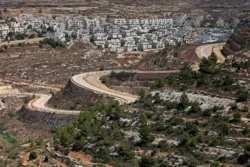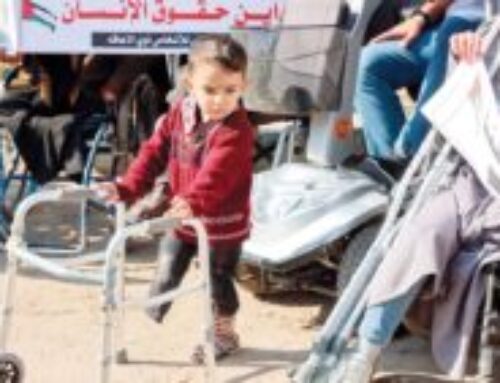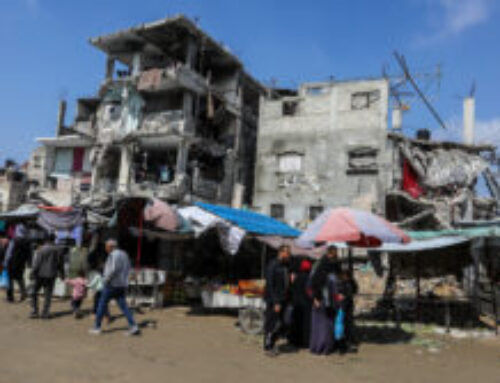In the West Bank, the landscape needs no political analysis to be understood; a single look at a hillside or a valley stretching toward the horizon reveals a land undergoing a slow uprooting. Here, where vineyards intertwine with the deep memory of ancient villages, the concrete of the usurping entity advances like a heavy shadow—stretching its limbs across hills and valleys, as if determined to erase the features of the place and replace them with a foreign face that resembles neither the history of the land nor its people.
Bulldozers push forward, reshaping the contours of the hills, carving out bypass roads that cut through the silence of the mountains, while Palestinian villages stand like small islands resisting rising waves of concrete that grow without pause. This land, which has cradled olive trees for centuries, is being uprooted so that walls and steel rooftops can take their place.
A Project Redrawn on the Ground… Not on Paper
Field observers say that more than 60% of the West Bank is now targeted by expansion projects carried out by the usurping entity. Dozens of outposts are being legalized one after another, massive settlement blocs are being expanded, and long roads stretch across the ridges—linking settlements to each other while severing Palestinian towns and villages from one another.
In just the past year, more than 9,000 new settlement units were announced, alongside a plan to convert 70 “unauthorized” outposts into officially recognized settlements—figures that reveal the magnitude of the expansion swallowing the land, while Palestinian communities are forbidden from building or expanding even by a single meter.
Major blocs like Ariel, Ma’ale Adumim, and Gush Etzion continue to grow, connected by strategic roads that carve through agricultural villages and seize vast tracts of farmland—turning them into natural extensions of the cities inside the occupied land. In this way, geographic continuity between the north and south of the West Bank is severed, and Palestinian villages are transformed into besieged pockets of population.
Villages Encircled… Farmers Shut Out from their Own Fields
The clearest phenomenon in recent months is what residents describe as “creeping settlement expansion”: daily growth that never stops—an excavation here, a fence there, settlers preventing farmers from reaching their land, and bulldozers altering the shape of the mountains without warning.
Around Salfit, south of Nablus, and east of Ramallah, farmers live under suffocating urban pressure. Many now reach their own fields “as visitors,” if they are allowed in at all, while constant restrictions prevent them from tending to the olive trees they inherited from their ancestors.
Eyewitness accounts confirm that smaller settlements are being gradually linked together, creating continuous belts of construction that choke Palestinian villages and consume the open spaces between the hills.
A Theft of the Land That Doesn’t Seek a Cover
What is happening in the West Bank needs no elaborate explanation: the land is being uprooted, the maps are being rewritten, and the place is being reshaped to serve those who do not belong to it.
No law allows a Palestinian to build his home, while settlements receive instant permits and ready-made expansions. No new roads serve the villages, while roads between settlements cut through the landscape at astonishing speed.
In the occupied West Bank, roads can be closed, land can be confiscated, and mountains can be carved apart—but the land that carried generations has not forgotten its people.
Settlement may choke the space, but it cannot kill the memory; concrete may spread, but it cannot erase the roots of the olive tree. For the West Bank—despite everything rising above it—still pulses with the names of its people. It will continue to say:
The land may be stolen… but it will never be surrendered.





